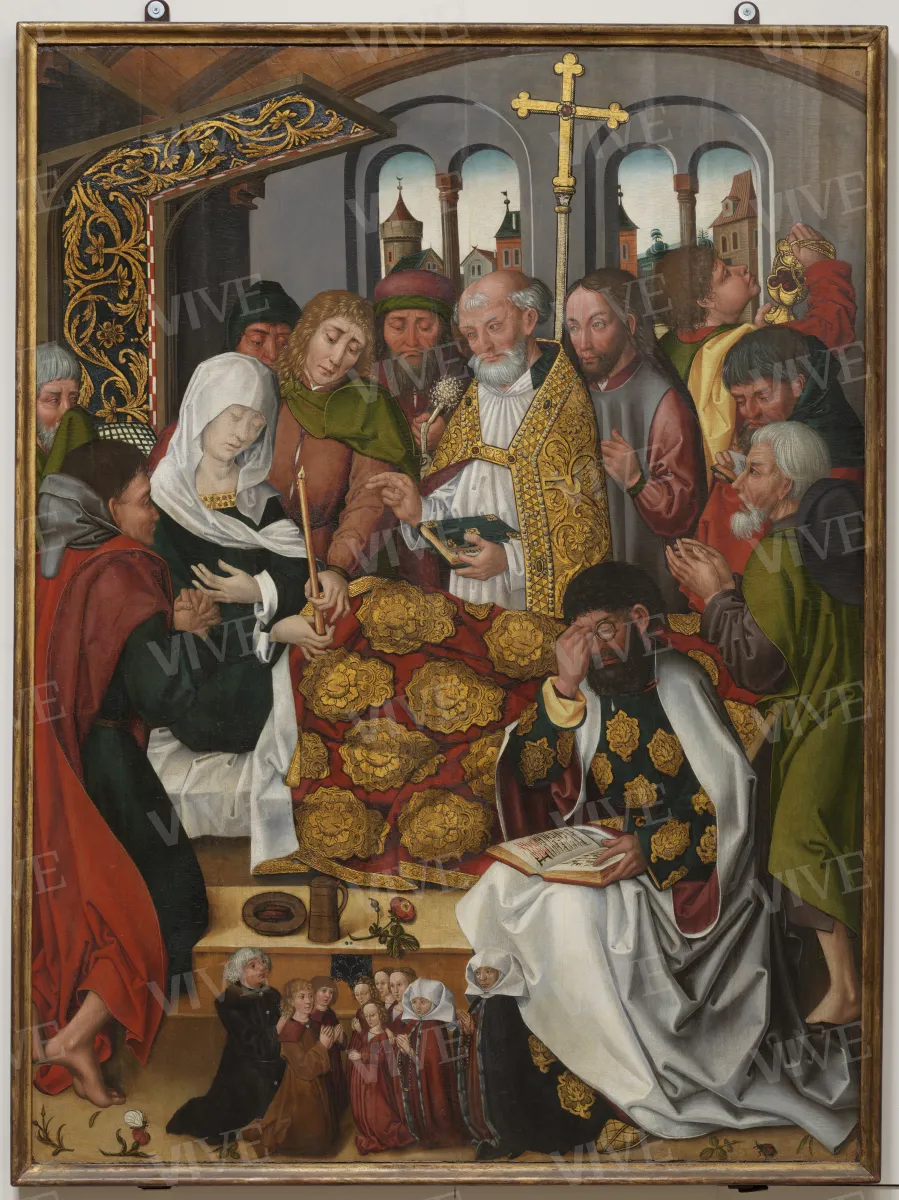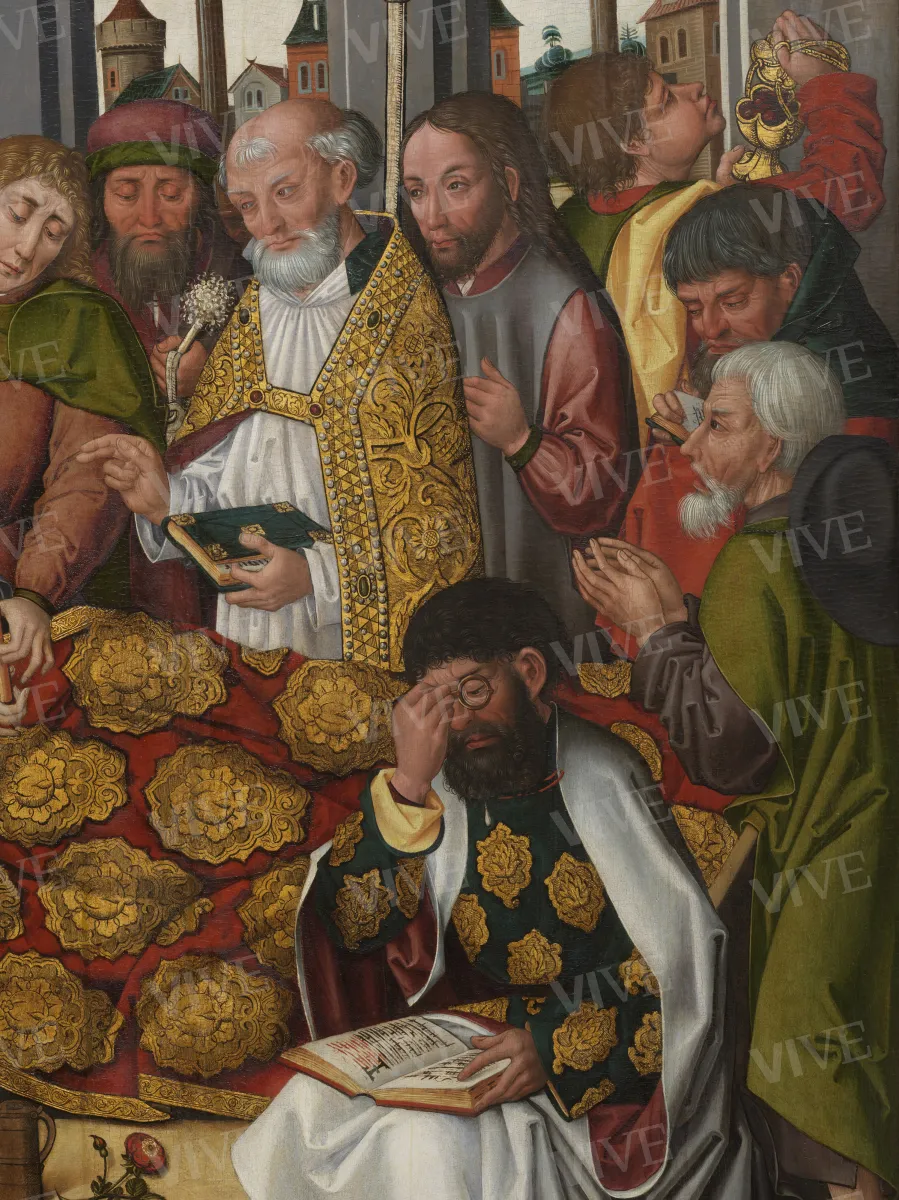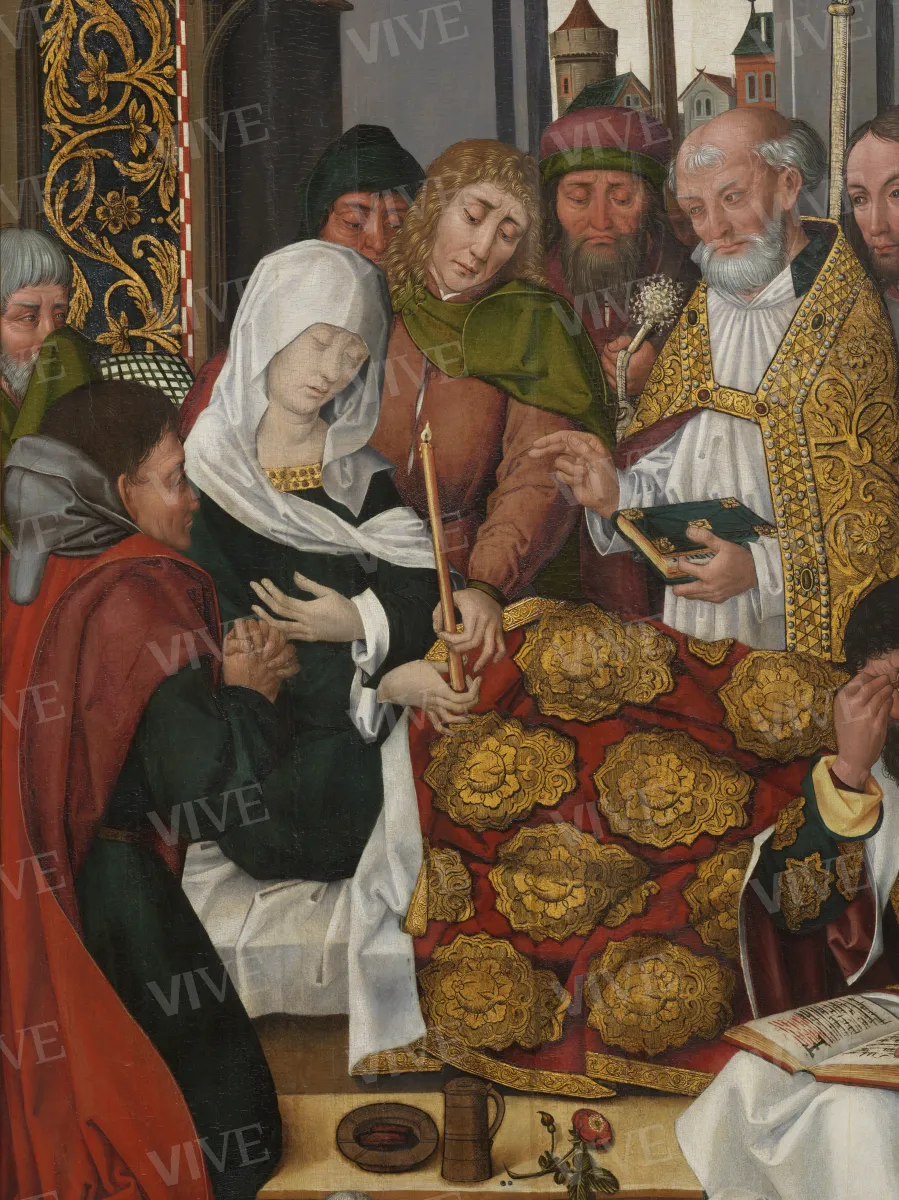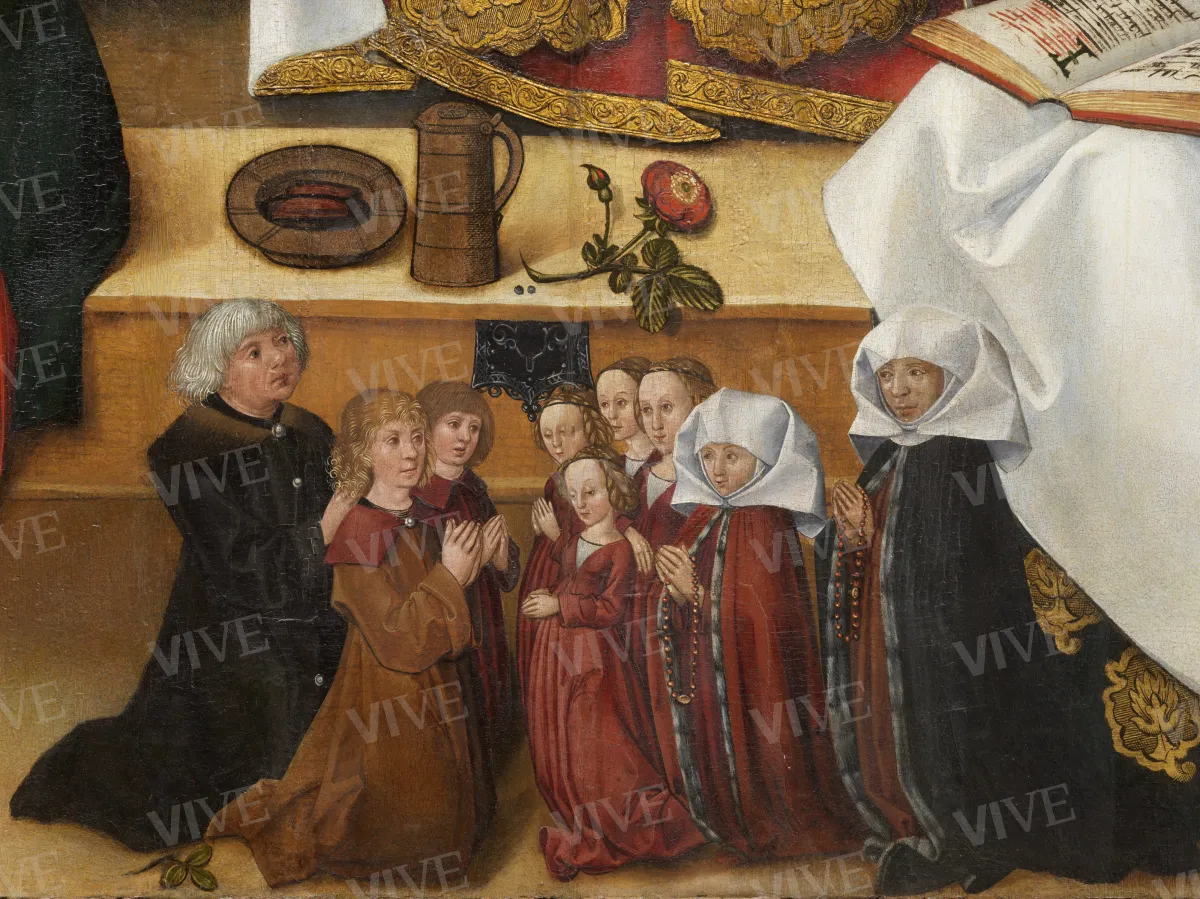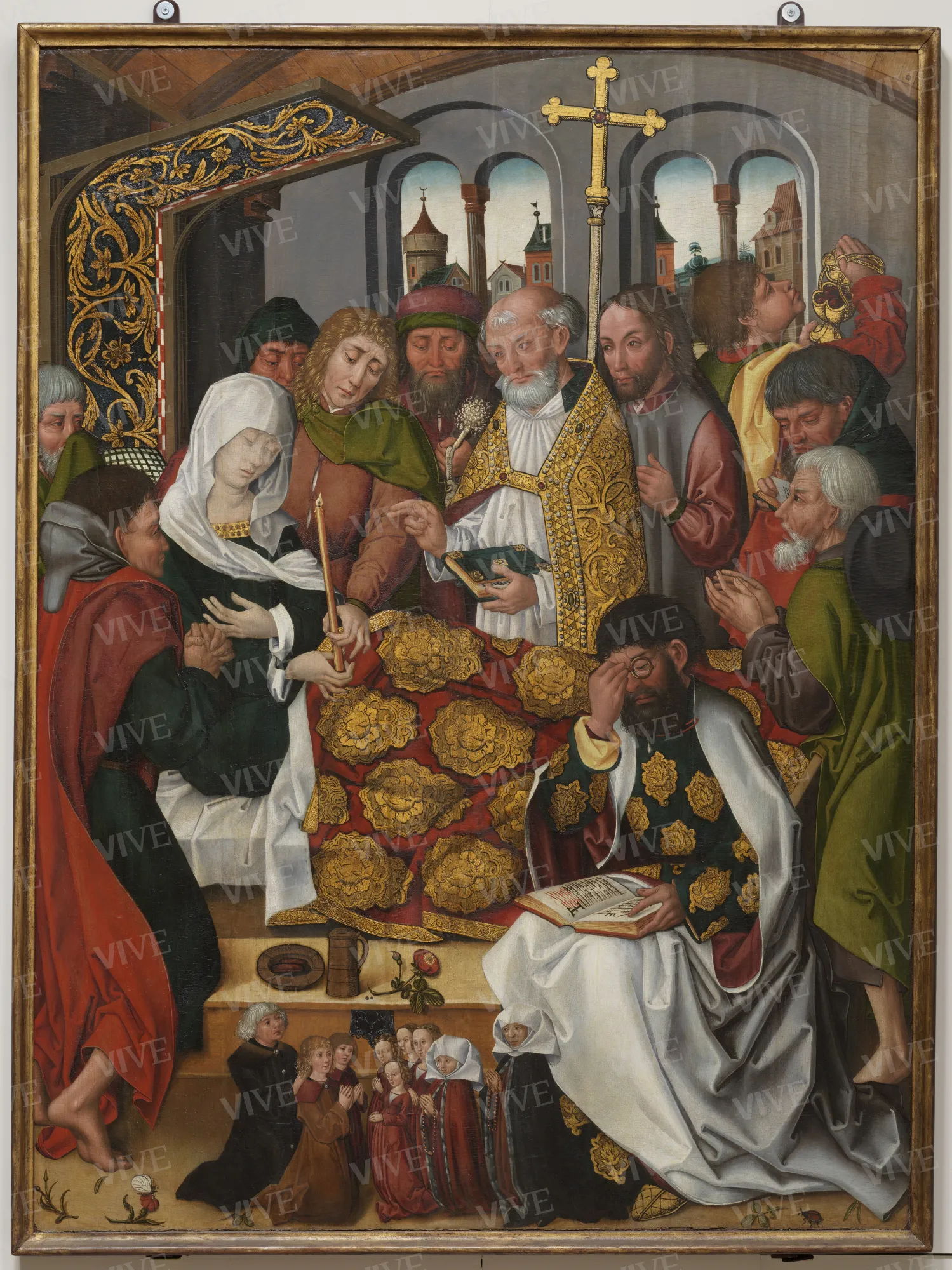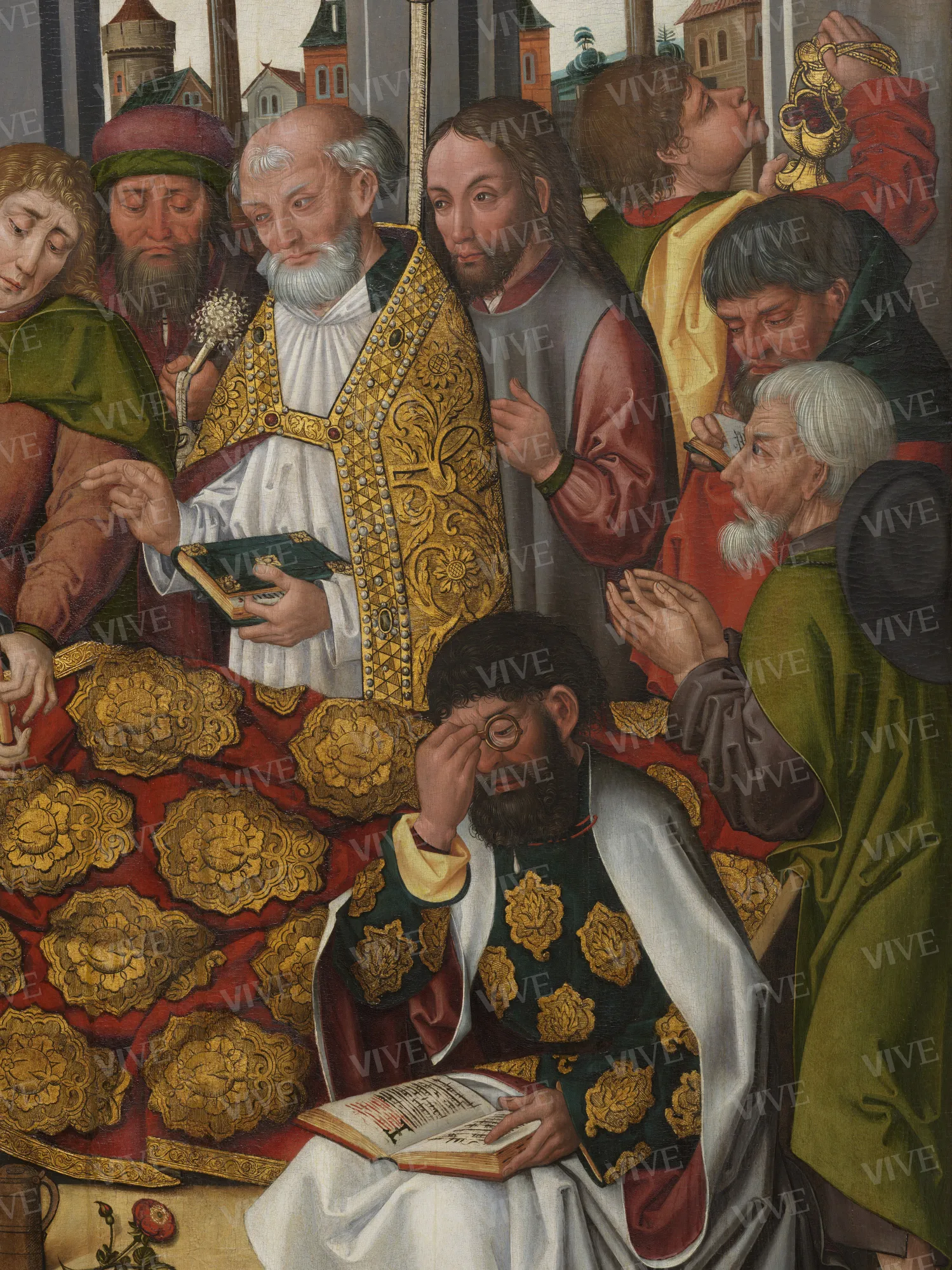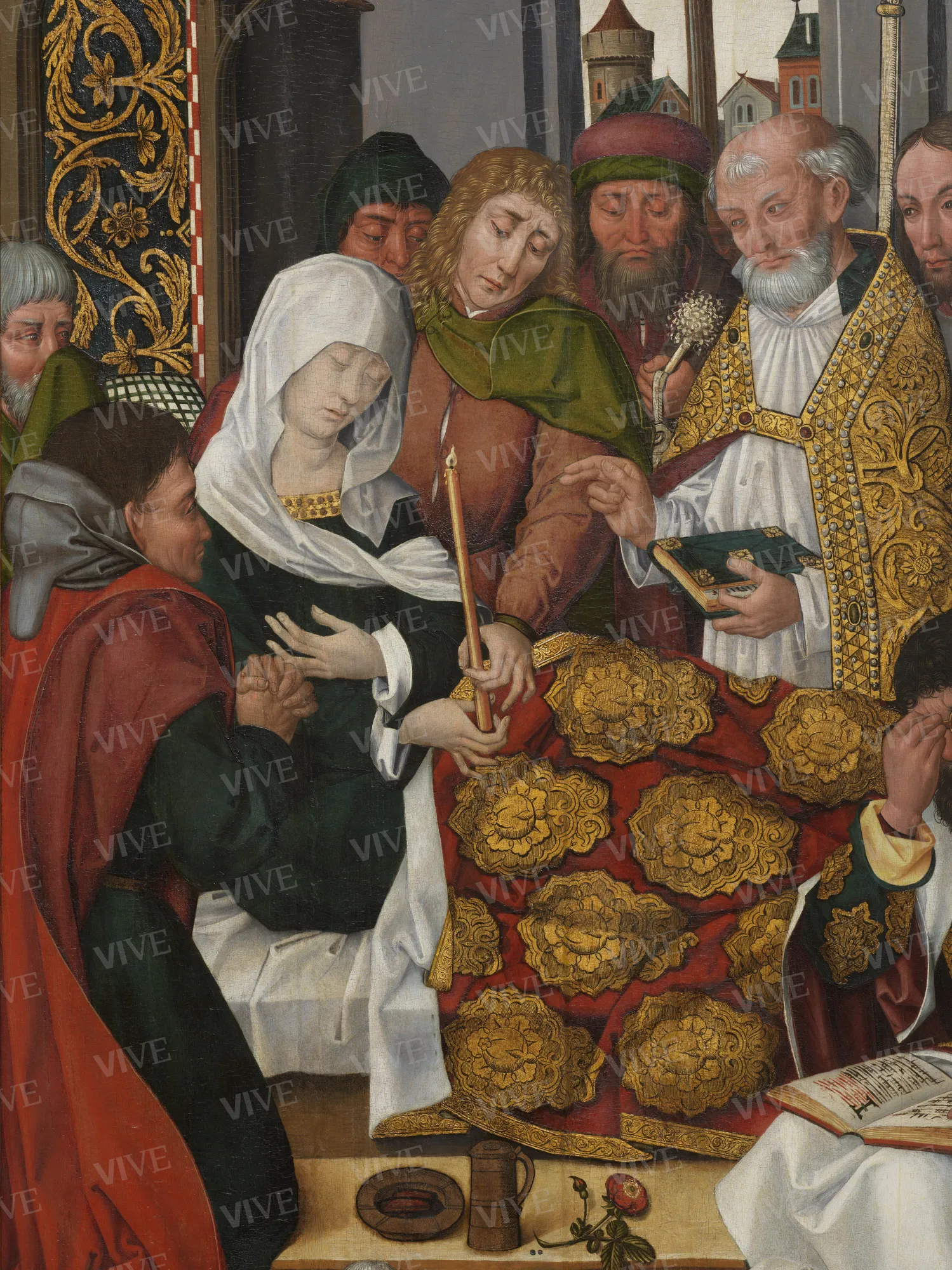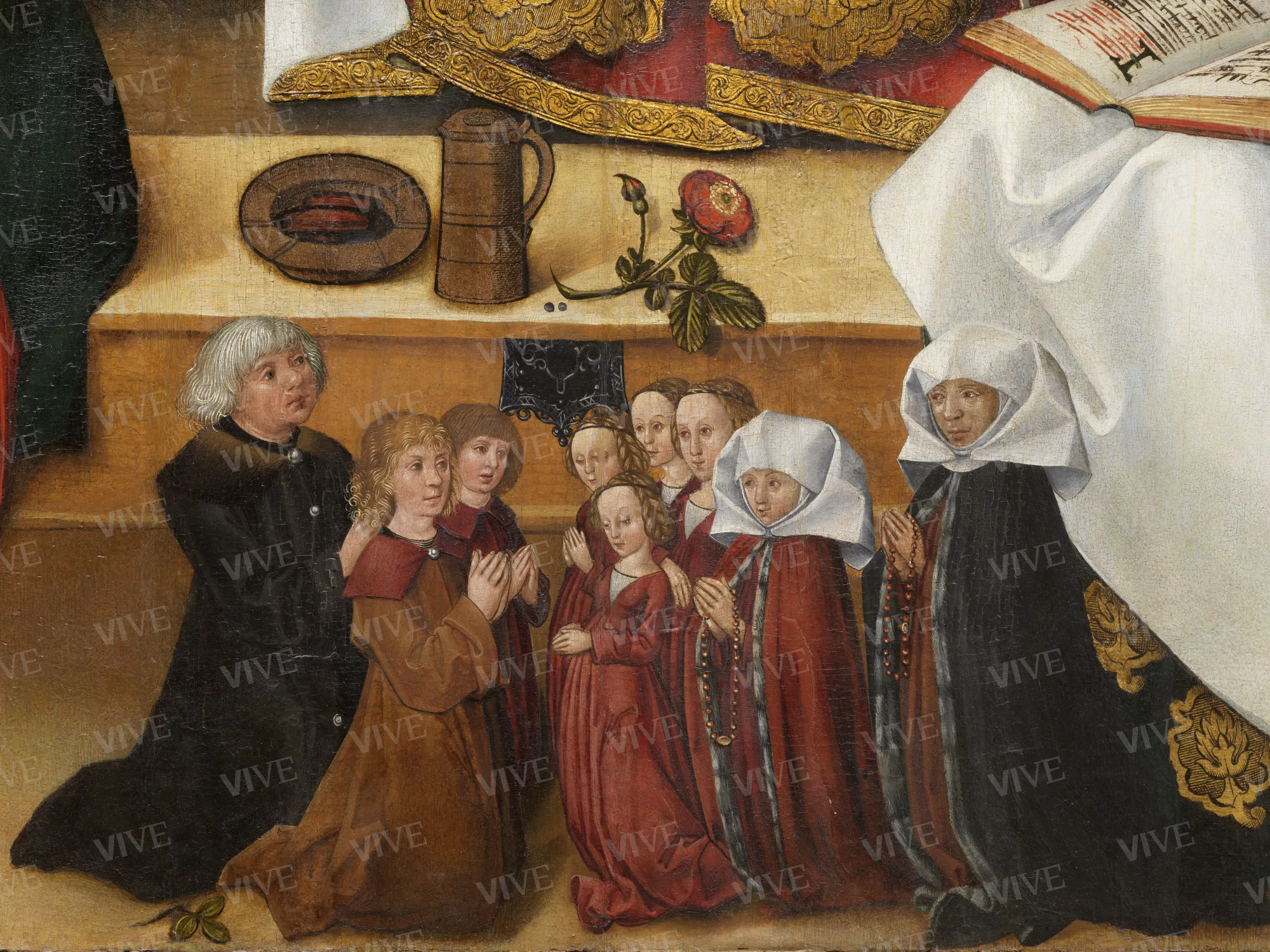Dormitio Virginis (Dormition of the Virgin)
Milieu Michael Wolgemut 1490-1520
The painting depicts the “transit” or death of the Virgin. At her bedside are the exquisitely dressed apostles and, further along, the unknown donors, hands clasped as they kneel in prayer. The style, subject, and format of the work clearly indicate its provenance from Germany, and more specifically from Nuremberg, where such panels, or “Epitaphs,” were placed on church pillars near tombs and private chapels, as memorials of illustrious inhabitants of the city.
The painting depicts the “transit” or death of the Virgin. At her bedside are the exquisitely dressed apostles and, further along, the unknown donors, hands clasped as they kneel in prayer. The style, subject, and format of the work clearly indicate its provenance from Germany, and more specifically from Nuremberg, where such panels, or “Epitaphs,” were placed on church pillars near tombs and private chapels, as memorials of illustrious inhabitants of the city.
Details of work
Catalog entry
The Dormitio Virginis, or Dormition of the Virgin, is a significant episode in the life of the Virgin Mary, described in apocryphal gospels and Jacopo da Varagine’s Legenda Aurea. It narrates that as the Virgin neared death, she asked God to gather the apostles, who were then far from Jerusalem on their evangelising missions.
The panel depicts Mary reclining on a four-poster bed adorned with floral motifs at the moment of her transition from life to the afterlife. The scene captures the actions and emotions of the eleven apostles present: In the foreground, one apostle, visibly distressed, kneels by the bedside table, hands clasped in prayer; at the opposite end, another apostle, wrapped in a white cloak and wearing glasses, reads a sacred text. John, the beloved apostle, places a candle in Mary's hands. At the center, Peter, dressed in priestly garments embroidered with gold and embellished with pearls and rubies, administers the last rites, while a disciple beside him holds an aspergillum with holy water. In the background, at a mullioned window overlooking a cityscape, an apostle blows on embers in a golden thurible. At the bottom of the painting, the donor family is depicted in prayer.
The restoration conducted in 2013 by Koiné Conservazione Beni Culturali s.c.r.l. determined that the panel had not been cut. It was discovered that in alignment with the four donors depicted at the lower margin of the painting, there were four coats of arms surrounded by asymmetrical plant volutes, slightly inclined towards the center of the altarpiece. X-ray analysis revealed the outline of a four-legged animal in the first and third shields from the left. However, these parts are largely obscured by a thick layer of paint applied after the original work was completed. This repainting, along with the presence of non-contemporary pigments and the repainting of certain areas in gold leaf (on the canopy, the Virgin's blanket, Saint Peter's vestment, and the white cloak of the apostle with spectacles), suggests an earlier intervention, possibly corresponding to the artwork's initial entry into the antiques market.
After the painting was brought to Palazzo Venezia in 1933, Antonino Santangelo (1947) noted its material and compositional richness and proposed attributing it to the German painter and engraver Michael Wolgemut, who was renowned as Albrecht Dürer's master. This attribution was accepted by Federico Hermanin (1948) and Federico Zeri (1955) and remained largely unchallenged until 2017. In 2017, however, Matthias Weniger suggested attributing the work to the workshop of painter Hans Traut, a contemporary of Wolgemut. This proposal was based on certain similarities in “the general layout of the painting and the construction of the faces” with a monumental panel attributed to Traut, which was originally on the altar of the Church of the Augustinians in Nuremberg and is now housed in the Germanisches Nationalmuseum in the same city. The panel in Palazzo Venezia is a faithful model of the Dormitio Virginis, originally from the Church of Saint Sebald in Nuremberg and now housed in the Museum of Fine Arts, Boston (c. 1493, inv. 03.610). It was formerly attributed to Michael Wolgemut but is now classified as the work of an anonymous German artist from the late fifteenth century. It is probable that the panel in Palazzo Venezia, like the one in Boston, is not an altarpiece but an “Epitaph.’ These paintings were typically hung on church nave pillars, private chapels, and family tombs, executed in memory of patrons or family members. This type of artwork was particularly common in south-central Germany during the last quarter of the fifteenth century. The Boston panel, measuring 205x112 cm, was one of the first monumental works preserved in Nuremberg (Weilandt 2007), potentially serving as a significant inspiration for the version in Palazzo Venezia.
Notably, this is one of the few German school paintings in the George Washington Wurts and Henrietta Tower collection at Palazzo Antici Mattei, which also includes many Germanic sculptures (e.g., inv. 7286; see Fachechi 2011 for a complete list).
Matteo Chirumbolo
Entry published on 27 March 2025
State of conservation
Good.
Restorations and analyses
2013: restoration by Marcello Mattarocci and Maria Francesca Tizzani for Koiné Conservazione Beni Culturali s.c.r.l., under the supervision of Andreina Draghi.
Provenance
Rome, George Washington Wurts and Henrietta Tower collection;
Rome, Museo Nazionale di Palazzo Venezia, donated by Henrietta Tower Wurts in 1933..
Exhibition history
Rome, Museo di Palazzo Venezia; Gallerie Sacconi al Vittoriano, Voglia d'Italia. Il collezionismo internazionale nella Roma del Vittoriano, December 7, 2017–March 4, 2018.
References
Santangelo Antonino (a cura di), Museo di Palazzo Venezia. Catalogo. 1. Dipinti, Roma 1947, p. 41;
Hermanin Federico, Il Palazzo di Venezia, Roma 1948, p. 244;
Zeri Federico (a cura di), Catalogo del Gabinetto Fotografico Nazionale. 3. I dipinti del Museo di Palazzo Venezia in Roma, Roma 1955, p. 8.
Weilandt Gerhardt, Die Sebalduskirche in Nürnberg. Bild und Gesellschaft im Zeitalter der Gotik und Renaissance, Petersberg, 2007;
Fachechi Grazia Maria, Sculture in legno del Museo Nazionale del Palazzo di Venezia, Roma 2011, cat. 57 (ill.);
Weniger Matthias, in Pellegrini Emanuele (a cura di), Voglia d’Italia. Il collezionismo internazionale nella Roma del Vittoriano, catalogo della mostra (Roma, Museo di Palazzo Venezia; Gallerie Sacconi al Vittoriano, 7 dicembre 2017-4 marzo 2018), Napoli 2017, p. 234, n. 4.7.

